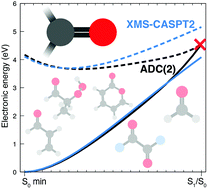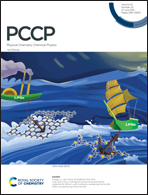Caveat when using ADC(2) for studying the photochemistry of carbonyl-containing molecules†
Abstract
Several electronic-structure methods are available to study the photochemistry and photophysics of organic molecules. Among them, ADC(2) stands as a sweet spot between computational efficiency and accuracy. As a result, ADC(2) has recently seen its number of applications booming, in particular to unravel the deactivation pathways and photodynamics of organic molecules. Despite this growing success, we demonstrate here that care has to be taken when studying the nonradiative pathways of carbonyl-containing molecules, as ADC(2) appears to suffer from a systematic flaw.

- This article is part of the themed collection: PCCP Emerging Investigator Lectureship Award Winners


 Please wait while we load your content...
Please wait while we load your content...